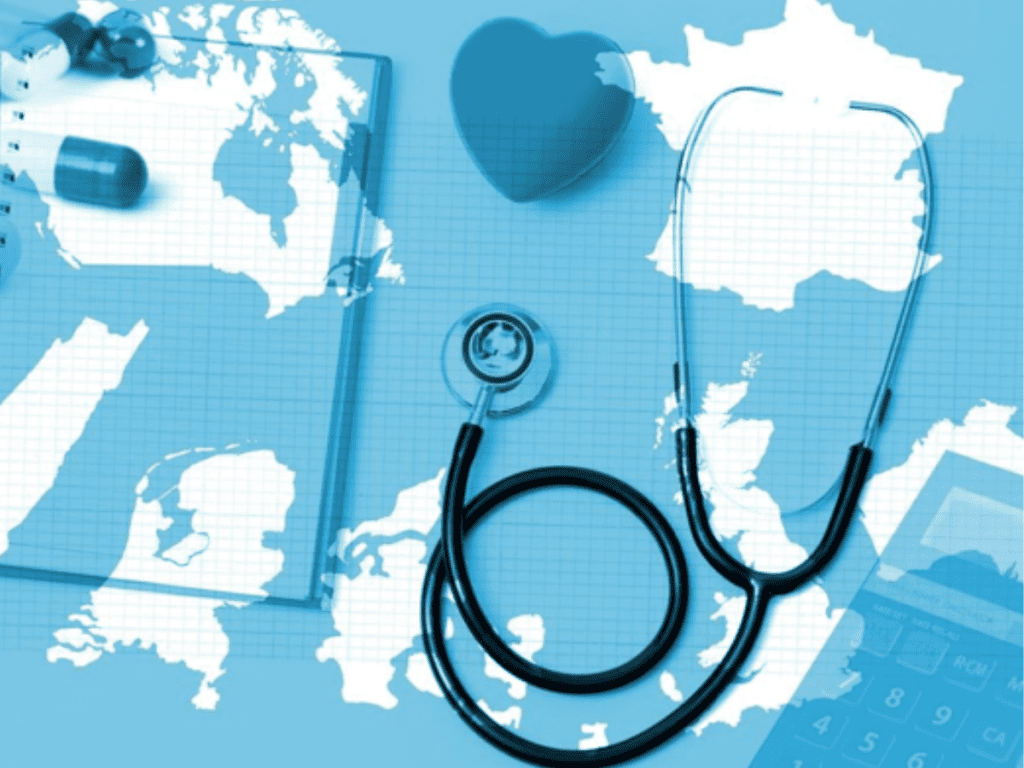Introduction
Health insurance is a vital part of ensuring financial and physical well-being. However, for many individuals and families, the cost of health insurance can seem prohibitively expensive. Rising premiums, out-of-pocket expenses, and high deductibles can create a barrier to access, leaving people wondering how they can manage their healthcare costs without insurance. If you’re in a situation where you cannot afford health insurance, you’re not alone, and there are several affordable options available that can help you maintain access to necessary care while managing your budget.
Understanding the Importance of Health Insurance
Before exploring the options available to those who can’t afford health insurance, it’s crucial to understand why having insurance matters. Health insurance protects you from the high costs of medical care by covering expenses for doctor visits, hospital stays, surgeries, prescription drugs, and preventive care. Without insurance, individuals are responsible for paying these costs out-of-pocket, which can quickly become unaffordable, especially in the case of an emergency or chronic illness.
Furthermore, health insurance provides access to a network of providers and services that help individuals receive timely and effective medical care. For those without insurance, accessing care can be challenging, and medical bills can become a significant financial burden. As medical care costs continue to rise, it’s important to consider alternatives if traditional insurance plans are out of reach.
1. Marketplace Health Insurance Plans (ACA Plans)
The Affordable Care Act (ACA) created health insurance marketplaces where individuals and families can shop for insurance plans at varying price points. Even if you can’t afford a traditional insurance plan, there are still options through these marketplaces that might make health insurance more affordable.
Subsidies and Premium Tax Credits:
One of the biggest advantages of ACA Marketplace plans is the availability of subsidies for low to middle-income individuals and families. The subsidies, known as premium tax credits, help reduce the monthly cost of insurance premiums based on your income. If your income is below 400% of the federal poverty level, you may qualify for financial assistance.
For example, a family of four making up to $106,000 per year may be eligible for subsidies that can significantly reduce monthly premiums. Additionally, depending on your income level, you may also qualify for reduced copayments and deductibles through a program called cost-sharing reductions (CSR).
Medicaid Expansion:
For those with very low incomes, Medicaid is an essential option. Medicaid is a state and federal program that offers free or low-cost health coverage to individuals and families who qualify based on their income level. Many states have expanded Medicaid under the ACA, making it available to a larger number of people. If you are in a state that has expanded Medicaid, you may be able to receive coverage even if your income is on the lower end.
To apply for health insurance through the ACA marketplace or to check if you qualify for Medicaid, you can visit HealthCare.gov or your state’s health insurance marketplace.
2. Medicaid and CHIP (Children’s Health Insurance Program)
If you’re unable to afford health insurance and meet certain eligibility criteria, Medicaid could be the most affordable option for you and your family. Medicaid is designed for low-income individuals and families, providing coverage for a wide range of services, including hospital care, doctor visits, prescription medications, mental health services, and more.
Eligibility for Medicaid varies by state, and each state has its own income and resource limits. However, in states that expanded Medicaid under the ACA, adults with incomes up to 138% of the federal poverty level may qualify for coverage.
The Children’s Health Insurance Program (CHIP) offers low-cost health coverage to children in families whose income is too high to qualify for Medicaid but may still have difficulty affording private health insurance. Depending on your income, your children may qualify for CHIP coverage, which offers a comprehensive set of benefits.
To find out whether you qualify for Medicaid or CHIP, visit your state’s Medicaid website or use the online eligibility tools provided by HealthCare.gov.
3. Community Health Centers and Free Clinics
Community health centers and free clinics are valuable resources for individuals who can’t afford health insurance but need medical care. These clinics provide a variety of healthcare services, including primary care, dental services, mental health care, and preventive services at a lower cost or even free, depending on your income level.
Federally Qualified Health Centers (FQHCs) receive funding from the federal government to provide services to underserved populations. These centers typically offer sliding scale fees based on your income, meaning you can pay for services according to what you can afford.
Free clinics, often run by nonprofit organizations, offer basic health services for no charge to eligible individuals. Some may charge a nominal fee, but they typically focus on providing care to people who are uninsured or underinsured.
To find community health centers or free clinics near you, visit the U.S. Department of Health and Human Services website or search for local resources through a search engine or community health organization.
4. Health Sharing Ministries
Health sharing ministries are a unique and cost-effective alternative to traditional health insurance. These are nonprofit organizations where members contribute a monthly fee to help cover medical costs for other members. While health sharing ministries are not technically insurance, they can provide a similar level of financial assistance for medical care.
The primary difference between health sharing ministries and traditional insurance is that the latter is regulated by state and federal laws, while health sharing ministries are not. This means that health sharing ministries do not have to cover every type of healthcare, and the organization may deny claims based on their guidelines. However, they can still be a viable option for those who cannot afford traditional health insurance plans.
Some well-known health sharing ministries include Medi-Share, Liberty HealthShare, and Samaritan Ministries. Be sure to thoroughly research each program to understand the coverage limits, eligibility requirements, and costs associated with each ministry.
5. Short-Term Health Plans
Short-term health insurance plans are designed to provide temporary coverage, often for periods of three to twelve months. These plans are typically less expensive than traditional health insurance plans, but they offer limited coverage and may not cover essential health benefits, such as mental health services or prescription medications.
Short-term health plans can be a useful option if you need temporary coverage in between jobs, if you missed the Open Enrollment Period for ACA plans, or if you want something more affordable in the short run. However, it’s important to note that these plans often have exclusions, higher deductibles, and limited benefits.
Some states have more stringent regulations on short-term health insurance plans, so be sure to review the specific rules and options in your state.
6. Catastrophic Health Plans
Catastrophic health insurance plans are designed to cover worst-case scenarios, such as serious accidents or illnesses. These plans typically have very low premiums, but they come with high deductibles and out-of-pocket costs. While they may not cover routine medical expenses, they can provide protection in case of a major health event.
Catastrophic plans are available to people under 30 and those who are exempt from other ACA plans due to financial hardship. They are designed to help individuals who can’t afford comprehensive coverage but still want to protect themselves against extreme medical costs.
Catastrophic health plans are available through the ACA Marketplace, and if you qualify, they can offer a low-cost alternative to full health coverage.
7. Prescription Drug Assistance Programs
For those who cannot afford their medications, prescription drug assistance programs (PAPs) can help cover the cost of medications. Many pharmaceutical companies, nonprofit organizations, and government agencies offer PAPs to provide low-cost or free medications to eligible individuals.
Some well-known programs include:
- Partnership for Prescription Assistance (PPA): Offers a variety of assistance programs for individuals who cannot afford prescription medications.
- NeedyMeds: A website that helps you find prescription assistance programs, discount cards, and other resources to lower the cost of medications.
- State Pharmaceutical Assistance Programs (SPAPs): Some states offer assistance programs for specific medications or groups of people.
To learn more about prescription assistance programs, check with your healthcare provider or pharmacist, or search for resources online.
8. Negotiate Medical Bills
If you’re facing a medical emergency or high medical bills and don’t have insurance, it’s often possible to negotiate directly with healthcare providers or hospitals to reduce costs. Many hospitals and healthcare providers have financial assistance programs that offer discounts or reduced charges for low-income patients.
Start by contacting the billing department and explaining your situation. Be prepared to provide proof of income, and don’t be afraid to ask for discounts or payment plans. In many cases, you can get your medical bills reduced or stretched out into affordable monthly payments.
Conclusion
If you find yourself unable to afford health insurance, there are many options available to help you manage your healthcare costs. From government programs like Medicaid and the ACA Marketplace to community health centers and prescription assistance programs, there are a variety of affordable resources that can provide access to necessary care without the burden of high medical expenses. While navigating these options can be challenging, it’s important to take the time to explore all possibilities and seek assistance. In doing so, you can ensure your health and well-being are protected without putting your financial stability at risk.

